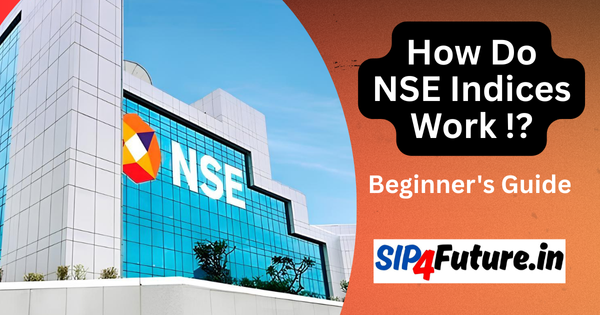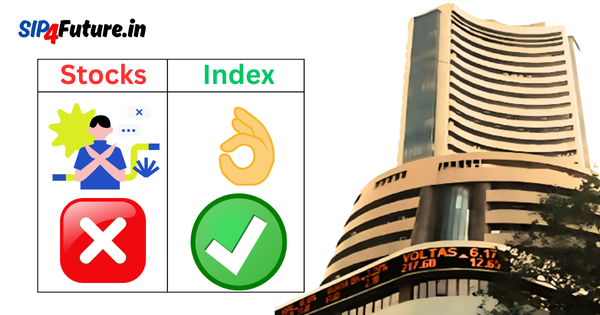Westlife Foodworld, the operator of McDonald’s restaurants in West and South India, is making significant strides in India’s quick-service restaurant (QSR) sector. On May 15, 2025, its stock traded at ₹692.20 on the National Stock Exchange (NSE), reflecting a minor dip of 0.63%. Despite this, the company’s ambitious expansion, marked by the addition of 47 new restaurants in FY 2025, underscores a positive outlook. With its Vision 2027 strategy aiming for 580–630 restaurants by 2027, Westlife Foodworld is poised to strengthen its market presence and capitalize on India’s growing fast-food demand.
What Drives Westlife Foodworld’s Expansion?
Westlife Foodworld’s growth is fueled by strategic initiatives tailored to India’s evolving consumer preferences. The company, which operates under the McDonald’s brand, has capitalized on the rising demand for quick, affordable dining options. By opening 47 new restaurants in FY 2025, it has expanded its footprint across urban and semi-urban regions in West and South India. This aligns with its Vision 2027, which targets a network of 580–630 outlets by 2027, up from its current count of approximately 400 restaurants.
The company’s focus extends beyond mere numbers. It emphasizes menu innovation, digital integration, and operational efficiency. For instance, Westlife has introduced localized menu items like the McSpicy Paneer Burger to cater to Indian tastes, boosting customer appeal. Additionally, investments in drive-thrus, delivery platforms, and digital ordering systems have enhanced accessibility, especially post-pandemic.
| Key Metrics | Details |
|---|---|
| New Restaurants (FY 2025) | 47 |
| Vision 2027 Target | 580–630 restaurants |
| Current Stock Price (NSE) | ₹692.20 (as of May 15, 2025) |
| Market Presence | West and South India |
How Does the QSR Sector Impact Westlife’s Growth?
India’s QSR sector is experiencing robust growth, driven by urbanization, rising disposable incomes, and a young demographic. According to a report by IBEF, the Indian food services market is projected to reach $112 billion by 2030, with QSRs accounting for a significant share. Westlife Foodworld, as a key player, benefits from this trend. Its McDonald’s outlets cater to a diverse customer base, from students seeking affordable meals to families looking for convenient dining experiences.
The sector’s growth is also supported by increasing penetration into Tier-2 and Tier-3 cities, where Westlife has strategically expanded. These regions offer untapped potential, with lower competition and growing brand awareness. However, challenges like high real estate costs and supply chain complexities persist, which Westlife mitigates through efficient operations and partnerships with local suppliers.
What Role Do Government Policies Play?
Government decisions significantly influence Westlife Foodworld’s operations and stock performance. The Government of India has promoted ease of doing business through initiatives like the Production-Linked Incentive (PLI) scheme for food processing, which encourages domestic sourcing and manufacturing. This benefits Westlife by reducing input costs for ingredients like sauces and packaging materials.
Conversely, policies like the Goods and Services Tax (GST) impact pricing. While the GST rate for restaurants was reduced to 5% without input tax credit, rising inflation and commodity prices can squeeze margins. Additionally, stricter food safety regulations by the Food Safety and Standards Authority of India (FSSAI) require compliance, increasing operational costs but ensuring consumer trust.
| Government Policy | Impact on Westlife |
|---|---|
| PLI Scheme | Reduces sourcing costs |
| GST (5%) | Limits pricing flexibility |
| FSSAI Regulations | Increases compliance costs but builds trust |
How Does the Global Market Influence Westlife’s Stock?
The global fast-food industry shapes Westlife Foodworld’s performance, given its affiliation with McDonald’s, a global brand. Rising commodity prices, particularly for wheat, oil, and poultry, driven by geopolitical tensions like the Russia-Ukraine conflict, impact input costs. However, India’s relatively stable supply chain mitigates some of these pressures compared to Western markets.
Globally, McDonald’s has faced challenges, including inflation-driven price hikes and boycott campaigns in certain regions due to geopolitical stances. While these have limited direct impact on Westlife, investor sentiment toward global fast-food stocks can influence its share price. On May 15, 2025, the stock’s 0.63% dip reflects broader market volatility, as seen on platforms like Moneycontrol.
Westlife’s focus on localization shields it from some global headwinds. By sourcing over 95% of its ingredients locally, it reduces exposure to international supply chain disruptions. Moreover, India’s economic resilience, with GDP growth projected at 6.5–7% for FY 2025–26 by the Reserve Bank of India (RBI), supports consumer spending, benefiting Westlife’s revenue.
What Is the Sentiment of Westlife Foodworld’s Stock?
The sentiment toward Westlife Foodworld’s stock is positive, driven by its strong fundamentals and growth prospects. The addition of 47 restaurants in FY 2025 demonstrates operational success, while Vision 2027 signals long-term ambition. Analysts view the company’s focus on digitalization, menu innovation, and expansion into smaller cities as key growth drivers.
However, short-term challenges like inflation and margin pressures warrant caution. The stock’s 0.63% decline on May 15, 2025, reflects market fluctuations rather than a shift in fundamentals. Positive investor confidence is evident from analyst reports on platforms like BSE India, which highlight Westlife’s resilience in a competitive QSR landscape.
When Will Westlife Achieve Vision 2027?
Westlife Foodworld’s Vision 2027 is on track, with 47 new restaurants added in FY 2025. To reach 580–630 restaurants by 2027, the company must maintain an annual addition of approximately 40–50 outlets. This pace is achievable, given its current momentum and financial health. Westlife’s revenue growth, reported at 17% year-on-year in recent quarters, supports its capital expenditure for expansion.
The company’s ability to secure prime locations and manage operational costs will be critical. Partnerships with real estate developers and digital platforms like Zomato and Swiggy enhance its reach, ensuring steady footfall and delivery revenue.
How Does Westlife Compare to Competitors?
Westlife Foodworld faces competition from global and local QSR chains like Domino’s (operated by Jubilant FoodWorks), Burger King, and KFC. While Domino’s leads in pizza delivery, Westlife’s diversified menu and McDonald’s brand equity give it an edge in the burger and family dining segment. Its focus on breakfast menus and coffee offerings through McCafé also taps into emerging trends.
| Competitor | Strengths | Challenges |
|---|---|---|
| Domino’s | Strong delivery network | Limited dine-in appeal |
| Burger King | Aggressive pricing | Smaller footprint |
| KFC | Fried chicken focus | Higher price points |
| Westlife | Brand equity, localization | Margin pressures |
What Are the Financial Highlights?
Westlife Foodworld’s financial performance reflects its growth trajectory. In FY 2024, the company reported revenues of ₹2,400 crore, with a 17% year-on-year increase, driven by same-store sales growth and new openings. Its EBITDA margins, however, faced pressure at 8–9%, due to rising input costs. Analysts on Moneycontrol expect margins to stabilize as economies of scale kick in with further expansion.
The company’s debt-free balance sheet and strong cash flows support its Vision 2027 investments. Its return on equity (ROE) of 20% is competitive within the QSR sector, signaling efficient capital utilization.
What Are the Risks and Opportunities?
Opportunities
- Urbanization: Growing urban populations drive demand for QSRs.
- Digital Growth: Investments in apps and delivery platforms boost revenue.
- Tier-2 Expansion: Smaller cities offer high growth potential.
Risks
- Inflation: Rising food and fuel costs pressure margins.
- Competition: Aggressive pricing by competitors like Burger King.
- Regulatory Changes: Stricter FSSAI norms increase compliance costs.
What Are Analyst Price Targets and Historical Returns?
Analyst reports from platforms like Motilal Oswal and ICICI Securities project positive targets for Westlife Foodworld. As of May 2025, consensus price targets range from ₹800 to ₹900 over the next 12–18 months, implying a 15–30% upside from ₹692.20. These targets factor in revenue growth, margin stabilization, and Vision 2027 execution.
Historically, Westlife’s stock has delivered strong returns. Over the past five years (2020–2025), it achieved a compounded annual growth rate (CAGR) of approximately 12%, outperforming the broader NIFTY 50 index’s 10% CAGR. However, short-term volatility, as seen in the 0.63% dip on May 15, 2025, highlights market sensitivity.
| Time Frame | Historical Returns (CAGR) |
|---|---|
| 1 Year (2024–2025) | 8% |
| 3 Years (2022–2025) | 10% |
| 5 Years (2020–2025) | 12% |
Conclusion
Westlife Foodworld’s strategic expansion, backed by Vision 2027, positions it as a leader in India’s QSR sector. With 47 new restaurants in FY 2025 and a target of 580–630 by 2027, the company is capitalizing on urbanization, digital trends, and localized offerings. While challenges like inflation and competition persist, its strong financials, McDonald’s brand equity, and positive analyst sentiment signal robust growth potential. Investors eyeing long-term opportunities in India’s fast-food market may find Westlife Foodworld a compelling prospect.
Disclaimer: This information is provided for educational purposes only and does not constitute financial advice. Stock market investments are subject to risks, and past performance is not indicative of future results. Consult a certified financial advisor before making investment decisions.




